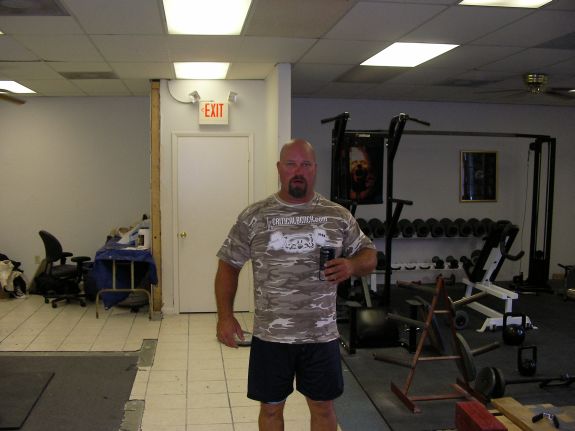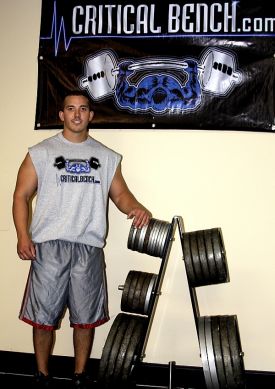Is the "Maximum Heart Rate" Formula Damaging
Your Workout (And Your Results)?
by Shin Ohtake creator of Max Workouts

Exercising within your "target heart rate" zone has long been accepted as a standard training protocol, but what if I told you that the formula for calculating your max heart rate is inaccurate? And that even the doctor that created the formula admits to being completely surprised at how the medical and fitness communities have made it the standard formula, without anyone actually doing any extended research. Here's the real story on how the formula for calculating your max heart rate came about (from the NY Times Health):
The common formula was devised in 1970 by Dr. William Haskell, then a young physician in the federal Public Health Service and his mentor, Dr. Samuel Fox, who led the service's program on heart disease. They were trying to determine how strenuously heart disease patients could exercise.
In preparation for a medical meeting , Dr. Haskell culled data from about 10 published studies in which people of different ages had been tested to find their maximum heart rates.
The subjects were never meant to be a representative sample of the population, said Dr. Haskell, who is now a professor of medicine at Stanford. Most were under 55 and some were smokers or had heart disease.
On an airplane traveling to the meeting, Dr. Haskell pulled out his data and showed them to Dr. Fox. "We drew a line through the points and I said, "Gee, if you extrapolate that out it looks like at age 20, the heart rate maximum is 200 and at age 40 it's 180 and at age 60 it's 160," Dr. Haskell said.
At that point, Dr. Fox suggested a formula: maximum heart rate equals 220 minus age. 
But, exercise physiologists said, these data, like virtually all exercise data, had limitations. They relied on volunteers who most likely were not representative of the general population. "It's whoever came in the door," Dr. Kirkendall said.
In addition, he and others said, gauging maximum heart rates for people who are not used to exercising is often difficult because many prematurely stop the test.
As the treadmill hills get steeper, people who are not used to exercise will notice that their calves are aching. "They will say they can't go any further," Dr. Kirkendall said.
In addition, Dr. Wilmore, the exercise physiologist, said it was clear from the scattered data points that maximum heart rates could vary widely from the formula. "If it says 150, it could be 180 and it could be 120," Dr. Wilmore said.
Can you imagine if your MHR (Maximum Heart Rate) was 160, but according to the formula your MHR was supposed to be 185? You could push your self until you passed out and still not reach your calculated MHR. Or, on the other hand, what if your MHR was actually 200, but the formula calculated it to be 180? You would always be training at sub-par intensities, wondering why the people around you were sweatin' up a storm when you barely broke a sweat.
The truth is that the popularity of the formula was more about timing than about exact science. It was available at just the right time, when people wanted an easy way to objectively figure out an intensity that would satisfy filling the criteria for both the medical field as well as the fitness field.
...But the formula quickly entered the medical literature. Even though it was almost always presented as an average maximum rate, the absolute numbers took on an air of received wisdom in part, medical scientists said, because the time was right.
Doctors urging heart patients to exercise wanted a way to gauge exercise intensity. At the same time, exercise gurus, promoting aerobic exercise to the public, were asking how hard people should push themselves to improve their cardiovascular fitness. Suddenly, there was a desire for a simple formula to estimate maximum heart rates.
"You tell people to exercise at a moderate intensity," Dr. Haskell said. "Well, what's a moderate intensity?'‘
Soon, there was a worldwide heart-rate monitor industry, led by Polar Electro Inc, of Oulu, Finland, selling more than 750,000 monitors a year in the United States and citing the "220 minus your age" formula as a guide for training.
The formula became increasingly entrenched, used to make graphs that are posted on the walls of health clubs and in cardiology treadmill rooms, prescribed in information for heart patients and inscribed in textbooks. But some experts never believed it.
Dr. Fritz Hagerman, an exercise physiologist at Ohio University, said he had learned from more than three decades of studying world class rowers that the whole idea of a formula to predict an individual's maximum heart rate was ludicrous. Even sillier, he said, is the common notion that the heart rate is an indication of fitness.
Some people get blood to their muscles by pushing out large amounts every time their hearts contract, he said. Others accomplish the same thing by contracting their hearts at fast rates. As a result, Dr. Hagerman said, he has seen Olympic rowers in their 20's with maximum heart rates of 220. And he has seen others on the same team and with the same ability, but who get blood to their tissues by pumping hard, with maximum rates of just 160.
'‘The heart rate is probably the least important variable in comparing athletes," Dr. Hagerman said.
So what is the best way to find out how hard you need to train, without going into the danger zone? Well, if you've been reading my blog or have already participated in my MAX Workouts program, you already know that I'm a big fan of high intensity training. I've never been a fan of using the heart rate monitor for the exact reasons talked about in the NY Times article. The one thing that I do recommend when starting out is to try and figure out what high intensity is for you—and that depends on your fitness level and your level of comfort with exertion.
One way to make sure that you're not working too hard for your fitness level is to take your heart rate immediately after finishing a bout of exercise and take it again one minute later. A normal individual's heart rate should drop about 20 BPM (Beats Per Minute) every minute. According to Dr. Michael Lauer, a cardiologist and the clinical researcher at The Cleveland Clinic Foundation—“it is not the maximum that matters: it is how quickly the heart rate falls when exercise is stopped.” “... the rates of athletes nose dive by 50 beats in a minute'‘. In a nutshell, the fitter you are the faster your heart rate goes down.
In life, most things are never black and white. It's never as simple or as easy as it seems. Although I think it's human nature to want to have order and simplicity in an otherwise chaotic world, our bodies are innately complicated and unique and no general formula will fit the needs of everyone. We all have a built in barometer that has the ability to gauge our own level of intensity and exertion. And like anything else, when you rely more on your own senses and get in tune with your body, the less you'll have to rely on gadgets and formulas based on statistics.
"I've kind of laughed about it over the years," Dr. Haskell said. The formula, he said, "was never supposed to be an absolute guide to rule people's training." But, he said, "It's so typical of Americans to take an idea and extend it beyond what it was originally intended for.'‘
If you're in good health and use a heart rate monitor as your training guide, try taking it off and workout using your own body as barometer. If you've never tried training at higher intensities because your concerned about your health, give it a shot. Intensity is dependent on your own level of fitness - you'll be amazed at how your body will respond when you give it an extra push - it'll give you a chance to maximize your full fitness potential.
Shin Ohtake is the author of the world-famous fitness program, MAX Workouts. To learn more about how you can get ultra lean and toned with shorter workouts, visit http://www.MaxWorkouts.com
More Articles By Shin Ohtake
Return to the Workout Articles Archive
|